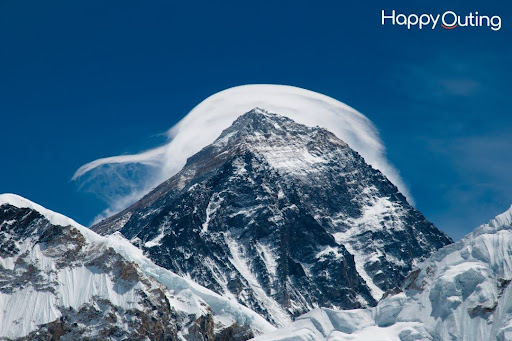Situated under the mighty Himalayas, Muktinath receives the solemn respect of Hindus and Buddhists. Considered at high altitude in the Mustang district of Nepal, this divine temple site is an abode for soulful beauty and incredible cultural splendor. With timing from Gorakhpur, Kathmandu, or Pokhara, this guide runs through all the nitty-gritty so that the trip to Muktinath is smooth-going and memorable.
Why One Would Like to Visit Muktinath?
It possesses spiritual significance. For Hindus, it ranks among the 108 Divya Desams for the Lord Vishnu. For Buddhists, it is where Guru Rinpoche meditated. Located at 3,800 meters, this temple is said to hold the eternal flame and 108 fountains to wash away one’s sins. Nevertheless, trekking is rewarded by fantastic scenery, the somewhat unusual Tibetan-influenced culture, and awe-inspiring views of the Annapurna and Dhaulagiri ranges.
The Best Way to Reach Muktinath
1. From Gorakhpur
Situated very close to the Nepalese border, this route is favored by many Indian pilgrims starting from Gorakhpur.
Exiting towards Pokhara: First ones travel from Gorakhpur to Sunauli (India-Nepal border); from there on, travel towards Pokhara by road. The journey takes 10 to 12 hours, with immigration checks in between.
A Flight From Pokhara to Jomsom: Road-wise, long and tedious. Thus, this stands as the best option.
From Jomsom to Muktinath: Take the jeep ride from Jomsom to Muktinath, especially for those Himalayan sights.
Most avoid putting complexities into their journey-rich lives and choose a Muktinath tour package from Gorakhpur. Most packages would offer transportation, accommodation, permits, and a guide—a complete, hassle-free journey.
2. From Kathmandu
Kathmandu, the capital of Nepal, supports a more accessible but longer route towards Muktinath.
Travel from Kathmandu to Pokhara: One can either take a flight or go by road for about 30 minutes and 6–7 hours, respectively.
Continue through Jomsom: Following the above route, fly to Jomsom and drive to Muktinath.
Another alternative is to get adventurous—the road route from Kathmandu to Muktinath goes through Pokhara, Beni, and Jomsom. Though time-consuming, you have a rare opportunity to see the rural side of Nepal.
3. From Pokhara
Options include
The Air Route: Operation’s daily flights between Pokhara and Jomsom. From Jomsom, a short jeep ride brings you to the temple.
By Road: Between Pokhara and Muktinath, jeeps and buses run through various points like Beni, Tatopani, and Kagbeni. The road is rough but the view it offers is unmatched.
Permits and Postulates
Like any other place for trekking, lodging over permits is a must on the way to Muktinath.
- TIMS Card (Information Management System for Trekkers)
- ACAP License (Annapurna Conservation Area Permit)
Where to Get It: From any Nepal Tourism Board office in Kathmandu or Pokhara. Or, if you have booked through a travel agency, they usually take care of your permits.
Best Time to Go
March to May and September to November are considered the best periods to go to Muktinath. These months bring clear skies with pleasant weather. Winter can be a visiting time, but snows and freezing temperatures (especially beyond and into Jomsom) can prove to be very hard.
Must-Pack List
Some essentials go along:
- Warm clothes (it feels chill at times even in summers)
- Comfortable trekking shoes
- Altitude sickness medicine
- Passport, permit copies
- Water bottles and energy snacks
Keep an eye on weather forecasts and prepare accordingly. The high elevations of the region mean that weather can change very rapidly.
Important Details to Know About the Area
- Remove your shoes before entering the temple.
- Dress modestly in respect of local customs.
- No photography is permitted within the temple premises.
- A small voluntary contribution is customary on leaving the temple.
- Regarding the Nepal package trip, the guide will brief the group on etiquette and assist in navigating local customs.
Accommodation and Gastronomy
In Muktinath and Jomsom, there exist lodges and teahouses with only basic facilities. Most of these provide simple fare: dal bhat (rice and lentils), noodles, and tea. Pokhara and Kathmandu offer all sorts of accommodations, from budget to luxury.
On high pathing (spring and autumn), advanced booking is highly recommended.
Conclusion
A trip to Muktinath is more than just a pilgrimage — it is faith, adventure, and nature in one. The days you spend getting there are so beautiful and spiritually rewarding, whether you start out from Gorakhpur, Kathmandu, or Pokhara. A well-planned Nepal package trip can make the experience even more fulfilling and effortless.


